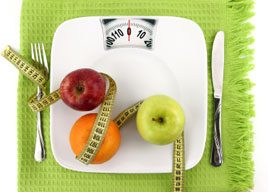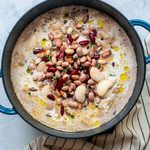How small switches in portion size can help you lose weight
Studies show that if people are served more food, they’ll eat it, regardless of their hunger level. Here’s how to right-size your portions

Source: Adapted from Swap & Drop Diet, Best Health (Reader’s Digest Canada); Image credit: iStockphoto.com
The single biggest problem Canadians face in the battle of the bulge isn’t what they eat, it’s how much. We now annually gobble up 140 pounds more food per person, on average, than we did in 1990. How is that possible? Take a look at lunch: With so many of us opting for fast-food offerings like bacon-covered cheeseburgers, jumbo drinks and fries, it’s no wonder we’re gaining all this weight.
We know what you’re thinking: Getting used to smaller portion sizes is easier said than done. If the portions you’ve been eating are significantly larger than the ones shown on these pages (or if your fruit and vegetable intake is considerably smaller), then it might be a shock to realize how much you need to change habits.
Relax! There’s no need to go hungry, now or at any time on the Swap & Drop diet. Sure, you might feel as if you should eat more the first time you follow our tips. But soon you’ll learn to recognize how hungry you really are ‘ and it’s probably less than you think.
This week, ease into healthier portion sizes by using the 50-percent trick at dinnertime: Serve yourself half of what you eat normally. After you’re done, take a few minutes to relax and savour the meal. If you’re still hungry, help yourself to half of what’s left over (meaning, a quarter of what you normally serve yourself). Otherwise, get up and clear the table.
Eating slowly helps you eat less because it allows your body time to realize it’s full. It actually takes your body about 20 minutes to register fullness. If you’ve been overeating, that means you don’t even realize until it’s too late. You shouldn’t feel sluggish after meals. Instead, you should feel energized and ready to get on with your day.
Visualize this
Finding the "right" way to eat can be difficult and complicated in a world of conflicting nutritional advice and disingenuous claims. In response to all this craziness, American food writer Michael Pollan had this simple advice: "Eat food. Not too much. Mostly plants."
We completely agree, but determining how much is too much can be hard. Just remember these handy comparisons:
‘ Starches and grains: 1 serving should be about the size of a tennis ball’and that includes cereal in the morning, a baked potato, bowl of rice or noodles.
‘ Cheese: a small palmful
‘ Lunch meat (for sandwiches): size and thickness of 2-3 CDs
‘ Seafood (shrimp, scallops, crab): size of a baseball
‘ Chicken, turkey, beef, veal or salmon: deck of cards
‘ Whitefish/non-fatty fish: chequebook
‘ Most dairy: 1 cup, or about enough to fill a small coffee cup.
Keeping restaurant meals under control
Canadians dine out frequently, with many of us eating at restaurants and cafés multiple times a week. That’s understandable: Sometimes it can feel as if planning and preparing dinner is just one more stress you don’t need. Besides, eating out can be fun! However, the restaurant habits can spell peril for people trying to lose weight: Restaurant portions have steadily inflated for the past several years, often including more than 20 percent more food than meals cooked at home.
What meal do you typically eat out? Breakfast, lunch, dinner’or all of the above? Next time you dine out, ask your server if half portions are available. If not, ask that you be served only half the meal, and that the other half be packed in a take-out container for you to bring home. At cafés and lunch counters, go for just the sandwich, without the bag of chips or creamy soup, no matter how cheap a combo might be.
It’s harder to resist temptation when you’re not the one in the kitchen. But just remember: It’s your money and your order, and there’s no reason you have to tailor your intake to suit a restaurant. Huge portion sizes are about giving you bang for your buck, after all’and in this case, the best value is just eating half.
Downsize your dishes
Portion sizes aren’t the only things that have grown bigger in recent years’the sizes of the plates and bowls on which those portions are being served have grown, too. If you have a tendency to pile your plate high and finish it all, try switching to smaller dinnerware.
Use a bread plate instead of a dinner plate for your entrée. Ditch the giant pasta bowls and use a smaller cereal bowl to serve spaghetti. If the plates you already have won’t do, buy an inexpensive set of downsized plates and bowls for everyday use. Another clever way to make a little less food seem like more: Try using a salad fork instead of a regular fork at your next meal and change to a smaller spoon for your soup and cereal.
Did you know you could change your life in 12 weeks? This simple 12-week step-by-step plan serves up no-nonsense strategies and easy lifestyle changes that tackle one meal, one change… one day at a time. Order your copy of Best Health’s Swap & Drop Diet today!




